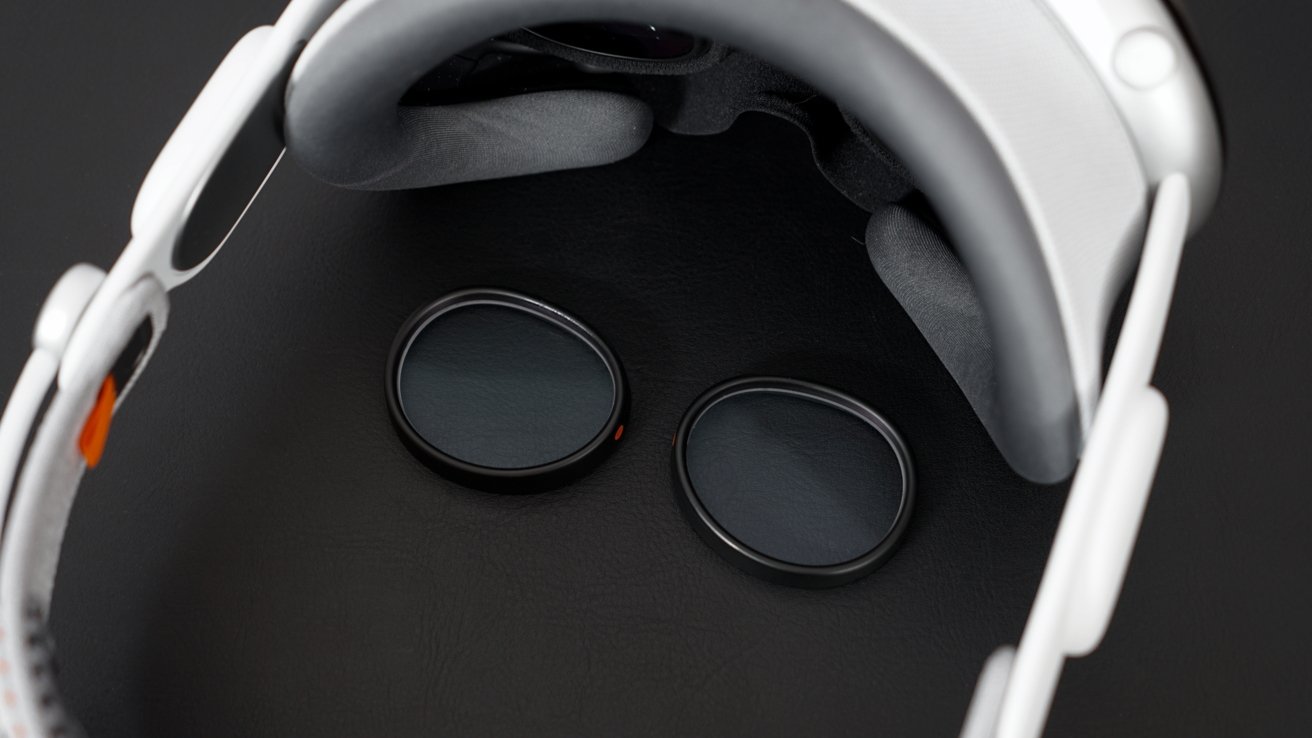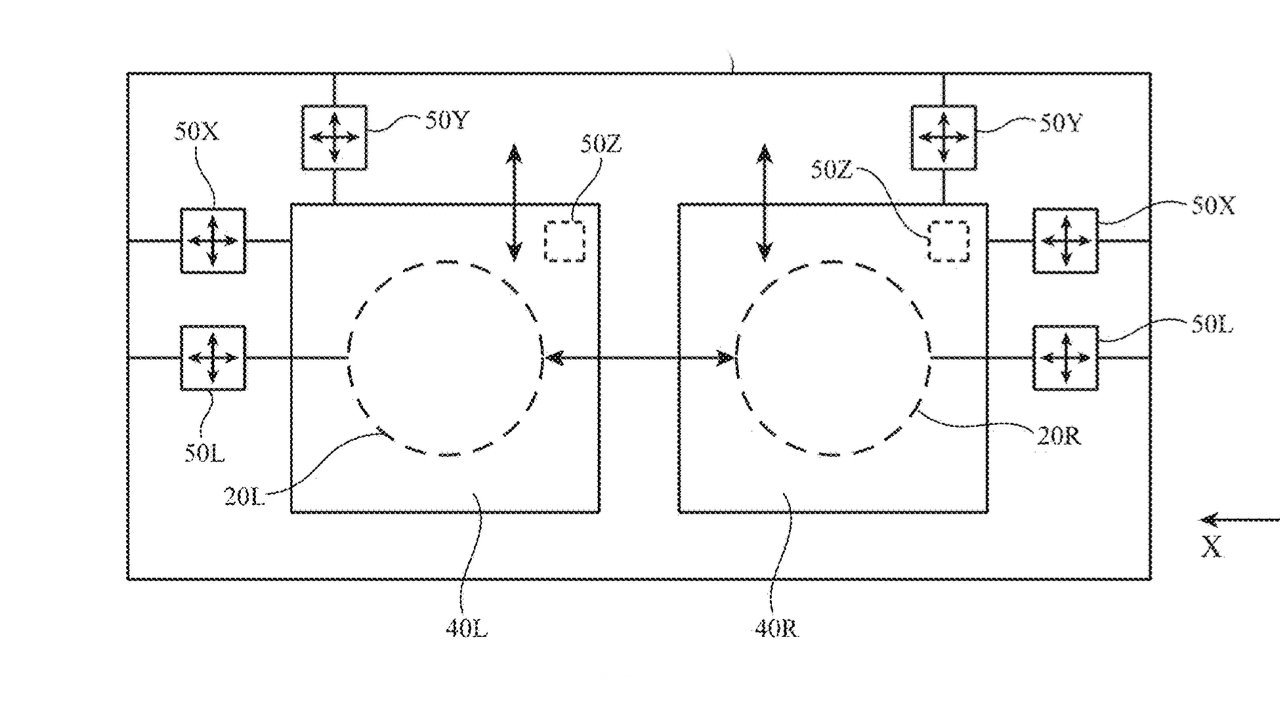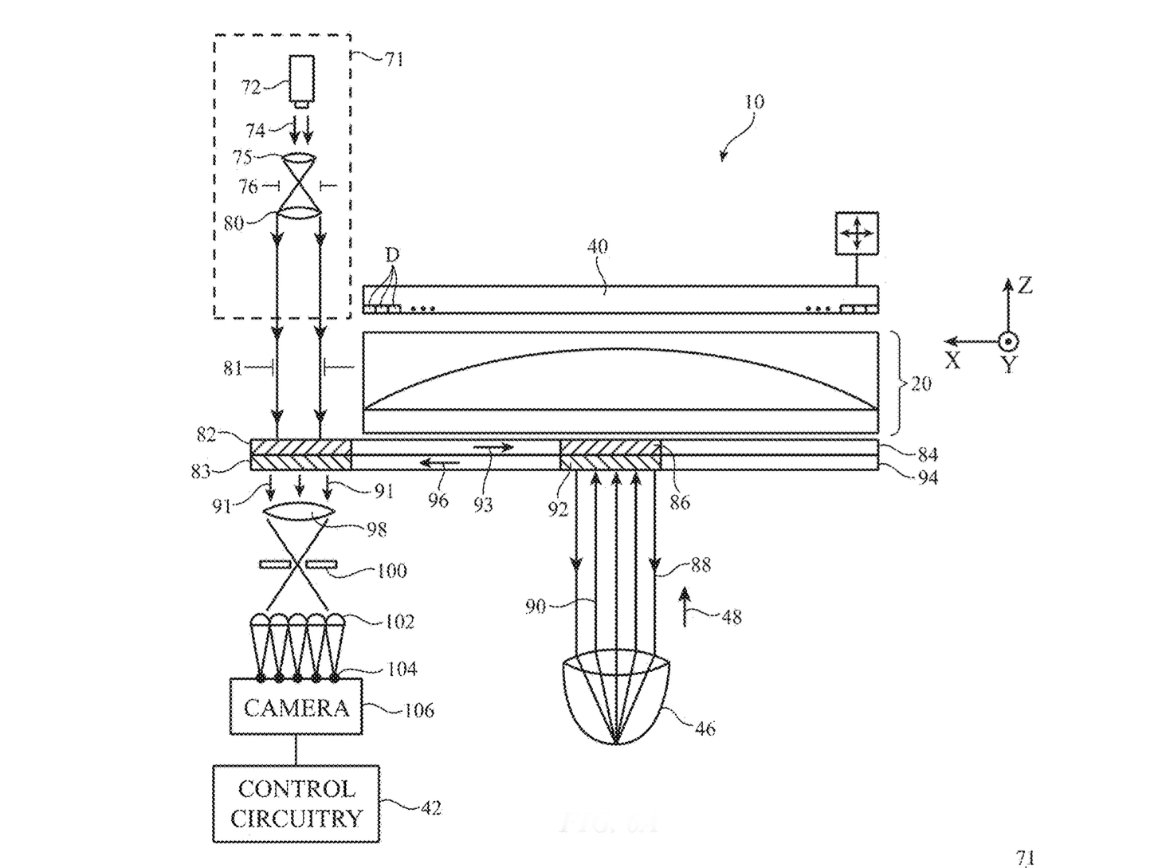Future Apple Vision Pro may correct for vision problems without magnetic lenses
Apple is working to remove the need for users to add prescription lenses to the Apple Vision Pro, by having the headset itself adapt to different vision needs.

Apple Vision Pro ZEISS optical inserts
Apple Vision Pro can be used by people with very many -- but not all -- visual impairment issues. So far, that involves selecting and using lenses or optical inserts.
That does mean that you can't just order an Apple Vision Pro online and expect it to be right for you. It's clearly in both Apple's and users' interests to make it more convenient to buy an Apple Vision Pro, and to have it work for more people.
Apple has looked at doing this using liquid lenses instead of glass ones, and even before the launch of Apple Vision Pro it was researching adjustable lens systems. Now a newly-revealed patent application shows that it has been continuing to work on the issue, and in great detail.
"Head-Mounted Display Device With Vision Correction" is broadly about including "a sensing system that measures the eye characteristics of the user's eyes." That system could comprise "a wavefront sensor such as a Shack- Hartmann wavefront sensor, Tscherning sensor, or a ray tracing sensor," which "may be used to measure refractive errors in a user's eyes such as astigmatism, farsightedness, and near-sightedness."

Detail from the patent application proposing movable lenses to correct vision impairment issues
The patent application says that refractive errors may be corrected by "tuning the lenses and/or adjusting display positions."
Much of the description is broad since the application of course aims to cover as wide a range of possible uses and implementations of the idea as it can. But it also gives multiple very specific examples that illustrate just what Apple is looking to achieve.
"Consider, as an example, a nearsighted user with astigmatism having a right eye (OD) prescription of sphere: -3.00 diopters, cylinder: -1.50 diopters, axis: 180 degrees," continues the patent application.
"This prescription indicates that the user needs spherical and cylindrical corrections of -3.00 and -1.5 diopters, respectively," it continues. "The axis value of 180 indicates the user's astigma-tism correction is horizontal."
Apple says that in this scenario, Apple Vision Pro could adjust the separation between the display and the user's eye with a "Z-axis positioner and the cylindrical correction can be obtained by tuning the horizontally oriented tunable cylindrical lens to produce -1.5 diopters of cylindrical lens power."

Detail from the patent demonstrating a Shack-Hartmann sensor
Apple applies for at least hundreds of patents every year, and it is granted very many of them. Just because something is proposed in a patent, it doesn't automatically follow that a product will ever be released.
However, the specific detail in this patent application, and how it comes after others in the same region, do point to Apple at least putting a lot of effort into this issue. So it may not be able to solve everything in time for the expected second Apple Vision Pro in perhaps 2026, but it seems it wants to.
This patent application is credited to 14 inventors. Many of them worked on an earlier patent application of the same name, while three including Victoria C. Chan are credited on a similar proposition filed in 2021.
Read on AppleInsider

Comments
Heck, just having a continually adjusting focusing pair of glasses would be an awesome product. I have worn bifocals for 15 years now, and now need a special pair for desk setups. So, at minimum, I now use 3 different pairs of glasses.